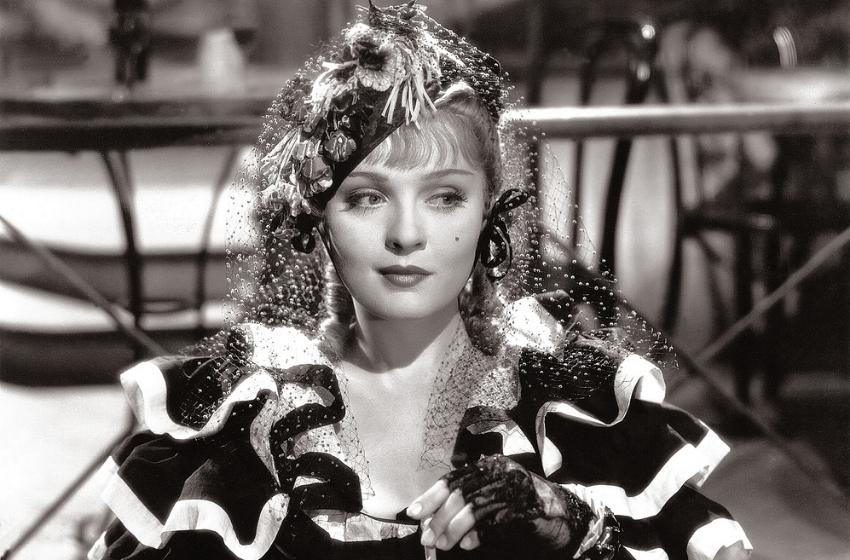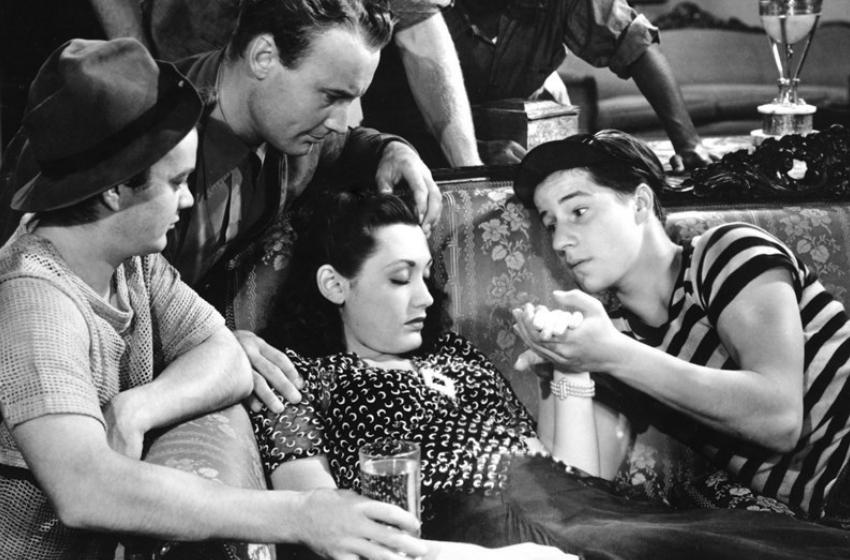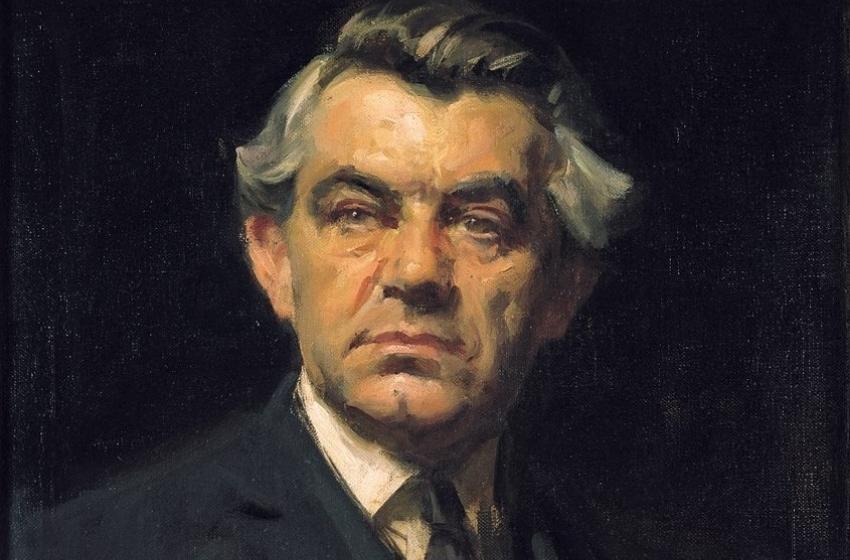Her entire creative biography is a fatal choice and a sharp turn. It is no coincidence that the world-famous film critic Jean-Loup Passek called her "a tragic representative of the world of Hollywood stars of the great era" - because for the most part the fate of Anna Sten did not fulfill its generous promises.
She happened to live in an era when cinema as a separate genre had not yet formed; it was just beginning its journey, struggling to break free from the passionate embrace of the theatre.
Anna Fesak was born in Kyiv. It is difficult to say anything definite about the year of birth, as is often the case with biographies of actresses, but the date most frequently mentioned is December 3, 1908. Information about the family is also quite uncertain and vague. According to one version, Anna's father worked as a clerk in a shoe store, and according to another - his father was a professional dancer and director, and his mother, a Swede - a prima ballerina of the Kyiv Opera House. Where the truth is, we do not know. The waters of time seem to have closed forever over this story.
There is also a legend - and most researchers write about it as a legend - that the first protection of the young actress was made by none other than Konstantin Stanislavsky himself. It seems that it was with his light hand that Anna Sten's triumphant and tragic path to great art began.
At first, Anna played in one of the amateur theaters in Kyiv. Later she entered the Kyiv State Theatre College, which she graduated from Anna Sten - during her studies, she married pop actor Boris Sten (Bernstein). This was her first of three marriages. According to the scanty eyewitness accounts, the marriage was happy, albeit short. In general, Anna Sten considered family life to be something not so significant, something secondary. According to scanty eyewitness accounts, she was a born diplomat - after the divorce, good relations with the former elect lasted a lifetime.


Anna's first mentor in cinema - at that time, she already lived in Moscow - was the director and actor Fedor Ozep. In 1926, Anna starred in his film "Miss Mend". During the filming, Ocep paid great attention to the young actress, made exquisite compliments, invited to dinner. Anna reciprocated. A year later, they get married. In the capital of the USSR, the couple lived in an "apartment" with two rooms in a communal house - despite the fact that Anna Sten's photos had already gone on sale, and this was perhaps the main evidence of great success at the time. However, fame did not solve the housing issue.
There is a witty legend about how her friend, actress Galyna Kravchenko, came to visit Anna. She found her washing clothes, with all the aesthetics inherent in the Moscow communal services of the time - a basin, household soap, a washing board. Anna stood over those troughs messy, wet, and half-naked. Galyna Kravchenko was indignant:
“God! Look at yourself! You are a movie star! â€
To which Anna did not say, but cut off:
"But I'm a Soviet movie star!"


Soviet movie star Anna Sten will not stay long. She will still have time to act in Yakov Protazanov's film "White Eagle" with Vasily Kachalov and Vsevolod Meyerhold. This, without exaggeration, triumphant tape for her, appearing in the German box office, will complete the Soviet period of Anna Stan's work.
At the invitation of German filmmakers, impressed by her talent, the actress and her husband will go to Germany, not intending to stay there forever. This time her fate will be decided by a personal diary, which she recklessly left in the custody of the well-known Soviet critic Hrysanf Kherson - by the way, the prototype of the critic Latunsky from "The Master and Margarita". While Anna is filming in Germany, the critic will read the recordings and write a devastating article about her, which, will cut off her way back.
Since 1931, Anna was actively involved in German cinema. No longer dumb, but Fedor Ozep's sound film "The Murderer Dmitry Karamazov" based on Dostoevsky was a huge success in Europe and America. Here - perhaps for the last time - Anna Sten most powerfully demonstrated the power of her dramatic talent. Eccentricity, sensitivity, and naivety, embodied Grushenka, still remains the main decoration of the creative work of the actress. And she would continue to act in European cinema - leisurely, psychological, focused on the depths of the characters' inner world, mainly indifferent to the brilliant external effects. But here - as many times later - Anna had a difficult choice.


I seem to see this brilliant Karamazov film again and how it appeared on the screen. I'm telling you, everything in my heart said that she would be the best in the history of cinema. And many thought so, I assure you… It's something special, it's a star! She has everything you need: beauty, style, sex, class. Her intelligence is combined with the intuition of an artist who knows life well. She has a lot of experience and she can play like a beast.
Samuel Goldwyn
In fact, Samuel Goldwyn lured Anna Sten to America with exorbitant fees and promised to make her a copy of Greta Garbo. By that time, Anna had already divorced Ozep and married for the third time - to Eugene Franke, an architect, film producer, Russian emigrant, who managed to transfer family assets to reliable European banks during the revolution. The couple agreed to move after long hesitations because in general, the position of Anna Sten in German cinema was stable. But at that time, the National Socialist clouds were already beginning to hang over Berlin. America promised paradise.
Samuel Goldwyn immediately began to invest heavily in Anna Sten. The advertising campaign for the film "Nana" (1934) based on Emil Zolya had a huge scope and promised something genuinely grand. However, no success. Film critics, however, write that Goldwyn himself is to blame for this because he tried to squeeze Anna Sten - with all her dramatic baggage and psychologism - into the flat image of a film maiden of the 30s, with a sparkling smile, deep neckline, and other external effects.



Anna Sten later recalled:
I had the feeling that I was being driven into an already created image, while I was expecting space for creativity. I used to have it.
Anna Sten
But she won critical praise with her sensitive portrayal of a wronged servant in her next film, "We Live Again" (1934). And her third Hollywood movie, "The Wedding Night" (1935), in which she co-starred with Gary Cooper, has been commended as entertaining.

She was a great actress, and a great actress was entitled to a great role.
Samuel Goldwyn
But in the end Goldwyn gave up. Well, the temperament of the actress from Eastern Europe did not want to fit into the stamped clichés of Hollywood divas. She was not offended, did not get hysterical. She said in an interview that "Samuel is a great man, a great producer, but I don't want to have anything to do with him anymore."

Anna loved borsch, she cooked it perfectly, as well as other dishes. She was too “simple†for Hollywood: she was not interested in fashion (although she always looked stylish), she got behind the wheel of a little Ford, avoided loud parties. Human nature turned out to be stronger than the narrow frames of the Hollywood "image of beauty".
After repeated poor box-office showings by her American movies, Mr. Goldwyn ended her contract, and she became known as "Goldwyn's folly." She went on to perform in a dozen other films.



In the 1960s, Anna Sten tried to make a career as an artist. She led a quiet life. Her works have even been exhibited in famous galleries. But there was no real success here either. She was already tired and noticeably disappointed. She helped many emigrants from the Soviet Union with money, who often lied about troubles and hardships to extort money. Who knows if she believed them, but she gave money, remembering how difficult it was for her in her youth. She saved her ex-husband Fedor Ocep from persecution by providing him with successful protection in the United States. One of the few Hollywood actresses, who did not shy away from her origins, said that she was born in Kyiv in all interviews.
Anna Sten had a daughter Anya Sten, a student at the Monticello School in Los Angeles in the early 1930s.
Anna Stan died on November 12, 1993 in New York. Many films featuring her were torn, lost, and lost. But those that remain, according to critics, show great potential.






















